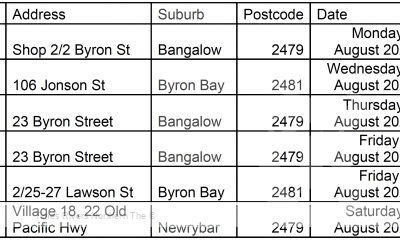A message from Executive Director, Dr Jared Greenville
Reflecting on a busy and productive 2022, it’s no small feat that Australian farming rounds out the year in a strong position.
While it’s impressive how resilient our agriculture sector has been, the past few months are a stark reminder of the volatility of Australia’s climate.
Spring rain and flooding have adversely impacted production in some parts of the country, while other areas are setting new winter crop production benchmarks.
We are forecasting the value of production to be $85 billion in 2022-23, with a record $72b export value.
But the numbers are only part of the story.
We are seeing more evidence of our agricultural industries innovating and adapting to changing climate conditions and production challenges – such as access to labour.
As our Labour Use in Agriculture analysis shows, farmers are looking to non-labour means of bringing the harvest in, such as greater use of machinery or altering crop plantings.
The Australian vegetable industry is also rising to the challenge of shifts in consumer incomes and tastes through product diversification and improvements in quality.
The lesson for other agricultural industries is that there can be significant gains from meeting changes in consumer demand that do not require selling greater quantities or a reliance on price rises for ‘traditional’ products.
Speaking of traditions, Australian seafood will again be a festive season favourite for many of us.
Our 2022 Fishery status reports show that Commonwealth fisheries continue to be well-managed and monitored to ensure their sustainability.
We are also seeing Australian aquaculture’s continued steady growth within the Australian fisheries sector.
In recent years, aquaculture has been broadening the composition of species produced, with an increased emphasis on prawns and finfish varieties, like barramundi and kingfish.
This is another sign of one our great industries adapting and innovating.
In closing, all of us at ABARES wish you and your families a safe and happy festive season.
Looking forward to seeing you in 2023.
In this issue:
All I want for Christmas is an Outlook 2023 registration!
Just in time for Christmas, we’ve opened registrations for ABARES Outlook 2023 – the national forum for sharing ideas and planning for the future of Australian agriculture.
The conference, to be held in Canberra on 7-8 March, covers the theme ‘Global uncertainty, local challenges’.
For more details and to take advantage of the discounted early bird registration rate visit the Outlook website.
Hands-free horticulture sees higher production
An analysis of our 2021-22 horticultural survey results shows horticultural businesses are finding ways to improve productivity despite constrained labour availability.
The number of workers used by horticulture farms decreased by around 20 per cent over the last three years, mainly due to fewer overseas working holiday makers.
When we look at changes to peak labour use, we have seen a reduction of close to 35,000 workers on horticulture farms compared to three years ago.
Over the same period, horticulture production has increased by around three per cent, with farms adapting by making greater use of capital equipment, along with increasing hours worked by employees.
The survey results were based on a weighted sample of 2,363 horticulture farms across Australia, selected by region and farm size to be representative of the total population of 9,763 farms.
Surveyed horticulture farms include fruit, nut and vegetable growers.
Read the ABARES Labour use in Australian agriculture report and view the data visualisation.
Fishery status reports 2022
The recently released 27th edition of the ABARES Fishery status report is an independent assessment of the biological and economic status of Commonwealth-managed fish stocks.
This work provides the Australian public with confidence that Australia’s marine resources are being managed appropriately.
The fisheries assessed in the Fishery status reports 2022 generated an estimated gross value of production (GVP) of $374 million in 2020–21, which is 27% of Australia’s total wild-catch fisheries GVP of $1.39 billion.
Of the 101 stocks assessed, 66 were both not overfished and not subject to overfishing.
Overall, the reports indicate that that Commonwealth fisheries continue to be well-managed, and subject to a range of management and monitoring measures to ensure their sustainability.
Cropping prospects mixed
While winter crop production in Australia is forecast to be the second highest on record, seasonal conditions in spring are expected to have constrained plantings of cotton and rice
Cotton production is forecast to decrease 23% in 2022–23 to 4.3 million bales, following a record of 5.6 million bales in 2021–22.
Excessively wet conditions and flooding across major NSW production regions in spring prevented planting. However, improved water storage levels in parts of Queensland are expected to add slightly to cotton production.
Rice production is forecast to fall by 51% in 2022–23 to 340,000 tonnes because of widespread flooding in southern NSW and many growers being unable to access paddocks.
Forest scientists in the field
ABARES forest scientists Steve Read, Claire Howell and Cressida Lehmann travelled to Albury in October for the 2022 Forestry Australia Symposium Leading, Adapting and Reimagining – The Future of Forestry.
The various talks focussed on the role of active forest management in addressing a range of social and environmental challenges.
One highlight was A/Professor Michael-Shawn Fletcher, a descendent of the Wiradjuri and with the University of Melbourne, recalibrating our understanding of how cultural burning practices could alter the prevalence of eucalypts in the landscape.
Claire chaired an energetic panel on growing timber on Australian farms, which included the 2022 Australian Farmer of the Year, Michael Taylor, NSW, as a speaker, with other panellists from Queensland, Tasmania, Victoria and New Zealand (online).
The conference also featured the release of Key Performance Indicators for Australia’s National Bushfire Management Policy Statement.
The Saturday field trip to Tumbarumba, NSW, provided the opportunity to learn first-hand of the devastation from the 2019-20 bushfires and the management of regenerating native forests and replanted plantations.
To learn more about our forestry science work visit the Forests Australiawebsite.
Future forest and wood products research assured
ABARES and Forest & Wood Products Australia (FWPA) have signed a two-year extension to their existing work program to fund future research into Australia’s forest and wood products industries.
The extension follows extensive consultation with FWPA members on the value that they place on ABARES work and the value placed on continuing the relationship.
The work program includes:
- the biannual publication of the Australian Forest and Wood products statistics, which provides a compendium of statistics to guide industry and government decisions,
- an annual 5-year outlook for the forest and wood products sector to inform government and business planning and decisions,
- the ongoing national wood processing survey to provide a snapshot of the current state of the wood processing value chain including log input, employment, and current challenges,
- a review of existing data sources and collections across federal and state governments and industry organisations to reduce survey burden on industry, and
- a future project using FoRUM (The Forest Resource Use Model) to model the future of Australia’s forest and wood products sector.
Each project is designed to deliver a robust evidence base which industry and government can use to make informed decisions.
For more details on ABARES-FWPA work program please contact ABARES at foreststatistics@agriculture.gov.au.
NRM knowledge conference
ABARES scientist Jasmine Howorth attended the 8th annual NRM knowledge conference 31 October – 2 November in Margaret River, Western Australia.
Jasmine presented at the Australian Government Long-term Monitoring Program field trip and workshop demonstrating the use of satellite data to report on vegetation change.
Participants got to test the RaPP Map which provides regions with data, tools and analyses for their reporting under the National Landcare Program’s Regional Land Partnerships.
ABARES with CSIRO will be hosting additional training sessions for regional groups in 2023. For more details contact land_management@agriculture.gov.au.
Indigenous forest data
A new Forests Australia webpage now provides access to ABARES-prepared land and forest data related to Indigenous peoples and communities.
Australia’s Indigenous peoples and communities, which comprise all Aboriginal and Torres Strait Islander peoples and communities, value forests for a range of cultural, social and economic reasons.
Substantial areas of Australia’s land and forest estate also have recognised ownership, management, or special rights of access or use by Indigenous peoples and communities, and together make up the ‘Indigenous estate’.
Information describing the connection of Indigenous peoples and communities to Australia’s land and forest is published in Australia’s State of the Forests Report.
ABARES data on the Indigenous estate also feature in the Australia State of the Environment report.





 Tweed Shire News2 years ago
Tweed Shire News2 years ago
 Motoring News1 year ago
Motoring News1 year ago
 COVID-19 Northern Rivers News3 years ago
COVID-19 Northern Rivers News3 years ago
 COVID-19 Northern Rivers News3 years ago
COVID-19 Northern Rivers News3 years ago
 Northern Rivers Local News3 years ago
Northern Rivers Local News3 years ago
 Health News3 years ago
Health News3 years ago
 COVID-19 Northern Rivers News3 years ago
COVID-19 Northern Rivers News3 years ago
 NSW Breaking News3 years ago
NSW Breaking News3 years ago




















